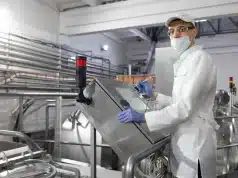Aside from the pandemic that the world is facing right now, we also have to worry about the environment. For thousands of years, since the start of life, human beings have relied on their surroundings for everything. Whether it’s food, shelter, or recreation, nature provides. Fast forward to the present where technology is advanced, and the world population is in full bloom.
Despite being in a tough time because of COVID-19, it’s a good thing to be alive in a world that’s ever so evolving. However, becoming better and transforming into something better comes with a price. The more we take from nature, the more it’s dying out. In the past, people would only hunt for food when they need it. Today, we consume more than we need.
This unsustainable behavior has led to disastrous events that have a global impact on everything living on this planet. One of the devastating events that we’re facing is the extinction of a species. Extinction means the end of a species. When something is extinct, you’ll only get to see it in pictures and videos.
Some may not consider it a big deal, but extinction has dire consequences that can literally turn the world into an uninhabitable place. If just one key species became extinct, it would cause a collapse in the food chain. It’s a known fact that we humans are at the top of the food chain. But what happens when something underneath us collapses?
Thankfully, people have been keen and understanding of how dreadful extinction is. To help you better, here are some facts about extinction that you should know about.
The Red List
As mentioned above, people are worried about the negative impacts that extinction has on the world. Because of its impact, the IUCN was formed. IUCN or the International Union for Conservation of Nature monitors threats on specific species. Whether it’s plant or animal life, the IUCN has developed the “Red List.” This fact is one of the most useful extinction facts that you should know about.
The red list contains seven basic levels that represent a threat level on species of animal or plant. These threats are:
- Least Concern
- Near threatened
- Endangered
- Critically endangered
- Extinct in the wild
- Extinct
1-5 Species/year
If you’re not worried about the rate of extinction for certain species all over the world, then you should be. It’s estimated that 1-5 species of plant or animal life go extinct each year. Even though we’re experiencing a comfortable life, it’s at the expense of these wonderful organisms.
Although the impact isn’t direct, you can slow down the rate of extinction. For one, you might do something that’s highly unsustainable. Changing just even one unsustainable practice can be a big help in the long run.
Plants Are the Most Vulnerable
Most of the time, people always assume that extinction is all about animals. Don’t be mistaken about that misconception. Plants are more susceptible to extinction compared to animals. Plants have no way of moving when they’re threatened. Also, huge forest areas are being burned and destroyed for human use. It’s no wonder that almost 68% of all flora in the world is now endangered of being wiped out forever.
The Story of the Yellowstone Wolves
As mentioned earlier, extinction can have some severe effects on the food chain. One example is the extinction of wolves in the Yellowstone National Park area. Because people considered wolves as harmful animals, rewards were given to people who could hunt down these animals. As expected, people hunted them down to the last wolf in Yellowstone.
For a while, people thought they were doing good by getting rid of a harmful animal that ate livestock and hurt human beings. However, the impact of such a horrible act made itself evident. As there were no more predatory wolves in the Yellowstone, the population of Elk and other herbivores began to rise. Although some consider it a good thing, it really isn’t.
The rise in the population of herbivores wiped out vast grazing lands in Yellowstone. It became so bad that these animals were eating saplings or small trees. Eventually, some of them even died because of starvation. Because trees weren’t growing, songbirds didn’t have trees to build their nests and went elsewhere.
A lot of problems followed, and it’s been that ever since. All because people thought getting rid of a vicious predator would do good. As you can see, the ecosystem and the food chain is a delicate balancing act. If one piece were to be taken out, it would result in a domino effect that will not favor us in any way.
Takeaway
Because of growing demands, overhunting, pollution, and other unsustainable human activities, animal and plant populations have suffered. If left unchecked, certain species will become extinct, causing the collapse of the entire food chain. Hopefully, the insights given above can be a way to put perspective into people, which will eventually lead to changes that benefit, not just us, but everything living in this world.





